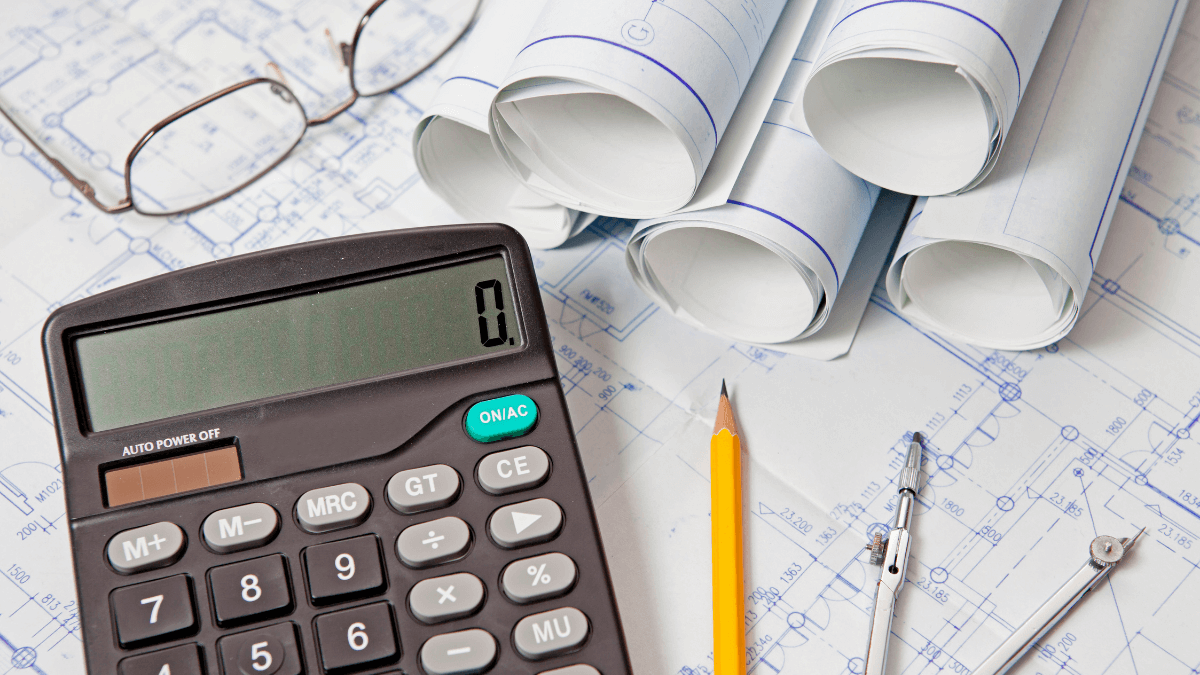When it comes to construction projects, every nail, machine, worker, and blueprint counts.
That’s why the significance of proper construction planning cannot be overstated.
Whether embarking on a residential project, commercial development, or infrastructure undertaking, the foundation of success lies in the meticulous orchestration of various elements before the ground is even broken.
A construction plan is precisely that: a means of ensuring a smooth workflow, efficiency, cost-effectiveness, and, ultimately, a structurally sound outcome.
So, continue reading to discover how exactly effective construction planning unlocks all these benefits and why dedicating more time and effort to this phase is essential.
In this article...
It Allows Cost Control
In the construction industry, cost overruns pose a common challenge that jeopardizes the success of a specific project and the overall well-being of a construction company.
Project plans play an important role in tackling this issue, serving as indispensable tools for effective cost control.
They achieve this in two ways.
The first, more obvious one involves precise, detailed, and meticulous budgeting.
This crucial step in the construction planning process aims to predict expenses related to materials, equipment, and other costs throughout the project’s duration.
However, budget management is inherently complex due to the diverse array of costs associated with construction work, as illustrated in the picture below.

Overly optimistic price estimates, coupled with inexperienced estimators, can therefore have the opposite effect and lead to cash flow problems, affecting the financial well-being of the project.
That’s why a careful and well-informed approach to financial planning is imperative.
A skilled project planner avoids estimating with the lowest prices and seeks suppliers’ input to gain a comprehensive understanding of expected costs.
The second way project plans mitigate overspending is by averting costly unplanned downtime.
Construction plans should incorporate contingency strategies that outline steps to be taken in unforeseen situations, minimizing the risk of unexpected work disruptions and delays.
Remember, unplanned downtime harms your financial health in more ways than just one, resulting in:
- Higher labor costs
- Higher maintenance costs
- Higher overhead costs
- Contractual penalties
- Increased insurance premiums
- Reputational damage
A well-structured plan isn’t necessary only for completing projects on time but also within budget constraints.
The combination of meticulous budgeting and strategic planning, grounded in a realistic understanding of potential challenges and risks involved in a project, forms a shield against the financial problems that often accompany construction endeavors.
It Supports Efficient Resource Management
Efficient management of company assets plays a crucial role in determining the outcome of a project.
Not enough equipment available?
You might face delays.
Too much of it?
You spent too much.
A meticulously crafted construction plan is essential for accurately forecasting the number of materials, tools, machines, and other equipment required for successful project completion.
This ensures a steady supply of resources from project initiation to conclusion.
However, proficient planners understand that resource allocation is an ongoing process, requiring contingency planning for potential future challenges.
For instance, materials hoarding, lost tools, or stolen equipment are common occurrences on busy and chaotic job sites.
Leveraging technological solutions is a key strategy in addressing these issues.
Take our equipment management software, GoCodes, for example.
This effective yet user-friendly system allows you to assign equipment to specific employees and establish return dates.
If a worker fails to meet the return date, the system automatically sends an email notification as a reminder, preventing workers from holding on to the equipment for too long when they don’t really need it.

The software also tracks GPS locations and users for all assets, minimizing the risk of loss or theft.
Getting started with GoCodes is a straightforward process. Attach QR code labels to your equipment and use our scanner app to check assets in or out, updating their data and location with each scan.
Wondering where a machine is and who’s using it?
Just take out your phone for instant access to this information.

In any case, keep in mind that a well-conceived project plan not only considers all anticipated resource needs but also foresees possible disruptions in workflow.
This foresight enables strategic resource allocation, maximizing the efficiency of all your materials, tools, and machinery.
It Mitigates Risks
A proficient construction planner is never too optimistic when crafting construction plans and, instead, strives to anticipate all the things that could go wrong during a project’s lifecycle.
In fact, one might argue that risk assessment constitutes a primary objective of project planning and management.

After all, construction is inherently a risky business. There are no two ways about it.
So, let’s focus for a moment on specific examples of common risks and examine how meticulous plans can aid in mitigating them.
One significant risk is extreme weather, particularly the hazards associated with severe heat.
Shockingly, the US Bureau of Labor Statistics reported 36 work-related deaths in 2021 attributed to environmental heat exposure, emphasizing the gravity of the issue.

Proactive planning becomes paramount when it comes to addressing such concerns.
For example, planning work during cooler times of the day can effectively mitigate the dangers of extreme heat. Changes in work hours can be, therefore, planned ahead, and health risks can be avoided.
Financial risks also cast a looming shadow over construction companies.
Unforeseen cost increases, especially when it comes to material prices, are a major worry for industry professionals and can strain cash flow or lead to project delays.
Simultaneously, equipment-related costs have surged as well, a Gordian survey shows, primarily driven by escalating diesel prices.

A thorough consideration of these factors during planning and budgeting is very important.
A skilled project planner will always conduct comprehensive market research, collaborate with experienced estimators to devise a detailed budget and allocate a contingency fund to cover unanticipated price increases.
Some businesses even opt for long-term agreements with suppliers to lock in prices for essential materials, offering stability and shielding against sudden price spikes.
These examples merely scratch the surface, however, as construction projects entail numerous other risks.
This is why, in this industry, forward-thinking along with thorough project plans that address unexpected events is a must.
It Ensures Quality
A well-crafted construction plan serves as the backbone of successful project management also because it enables the delivery of a superior quality.
Quality planning, a crucial facet of project planning, encompasses several elements that contribute to satisfactory project outcomes.
Firstly, construction plans provide detailed specifications for materials, methods, and standards, ensuring that the quality investors are aiming for is maintained during the entire process.
For instance, a plan may stipulate adherence to ASTM A36 standards for all structural steel components, guaranteeing materials meet specified criteria and don’t compromise performance in the future.

Likewise, construction plans typically include quality control procedures to be implemented throughout the project.
To illustrate, in the context of concrete pours, the plan might dictate that slump tests, air content tests, or compressive strength testing must be performed regularly to ensure the quality of concrete as well as the durability and safety of structures.
When it comes to streamlining these often complex processes, checklists can be a lifesaver.

They break tasks down into manageable subtasks, making it easier for the team to adhere to the established guidelines and requirements.
Finally, quality planning involves establishing benchmarks and measurements to gauge whether or not you’re meeting the specified standards.
To use concrete as an example once again, plans can provide minimum requirements for its compressive strength.
If the requirement is, say, 4,000 psi at 28 days, but the testing shows that the concrete strength isn’t up to par, this might be a red flag, leading to various issues and concerns, and affecting the structural integrity and safety of the construction.
At the end of the day, hitting deadlines and staying within budget are important, but they’re just part of the equation.
A project can be considered a success only when the final result meets quality expectations, leaving clients satisfied.
Construction plans play a pivotal role here, guiding the team in delivering products of the highest quality and facilitating quality assessment at every stage of the project, reinforcing the commitment to excellence and customer-centric outcomes.
It Supports Regulatory Compliance
Regulatory compliance is a critical aspect of any project, and the construction plan serves as a vital tool for achieving it.
The repercussions of non-compliance are severe, ranging from substantial fines and penalties to lawsuits, delays, reputational damage, and even the potential loss of future clients, all of which could ultimately lead to business closure.
So, how do construction plans exactly protect you from these serious problems?
For starters, during the planning phase, thorough research needs to be conducted to identify the necessary permits and estimate the time required to obtain them.
Permits for building, dirt work, land clearing, utility, and septic systems must be considered, each with its own timeline for acquisition.
According to insights from Barn Pros, the permit procurement process can take up to a year, or in some cases, even more.

However, given the unique demands of each project, conducting your own research remains a necessity.
Another aspect of regulatory compliance demanding attention within project planning is payroll.
Kit Dickinson from ADP underscores the challenges professionals in the industry encounter in ensuring compliance in this area.
Construction is one of the most complicated industries to administer payroll. Construction firms must adhere to complex laws and regulations while often working in multiple jurisdictions.(…)To accommodate visibility across government jobs, union members, private work and employees/contractors, the entire payroll process must be transparent and accurate.
Thus, comprehensive data collection during the planning phase is vital to proactively address potential issues related to wage compliance and workforce management.
Moreover, project plans have a role to play in adhering to safety regulations, too.
To ensure a safe and productive work environment, construction planners need to analyze relevant safety procedures and plan protective gear, provide training, and incorporate these elements into the project budgets and schedules.
All in all, despite the effort needed to stay on top of all these diverse laws and standards, integrating them into the project planning process proves to be a significant time-saver in the long run.
This proactive approach not only ensures you stay compliant with the rules and regulations, but also prepares you for any unexpected situations, and enables you to focus on what truly matters: getting the job done.
Conclusion
And getting the job done, especially within specified timeframes and budgetary constraints, while delivering top-notch product and adhering to regulatory requirements, is all possible only through efficient project planning.
We hope that this article has successfully conveyed the significance of this planning phase and highlighted why it should not be underestimated or neglected.
From safeguarding against theft and preventing delays to mitigating legal complications and averting safety hazards, a well-thought-out plan serves as the cornerstone of project resilience.
So, research, analyze, plan, and predict, and watch your business reach new heights.





